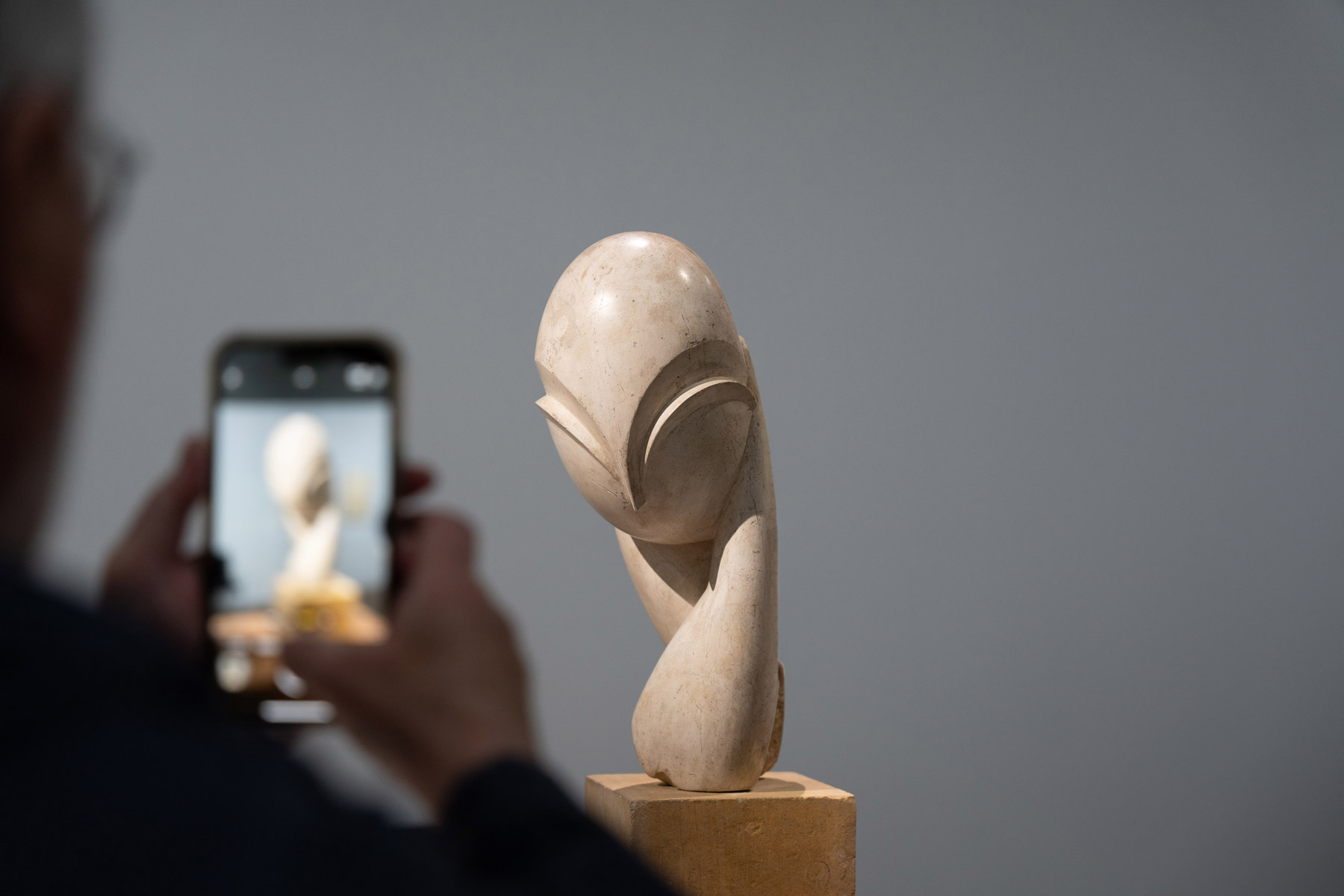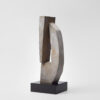As the last days of the Constantin Brâncuși exhibition at the Centre Pompidou have begun, I would like to share my impressions of the exhibition with you. Those of you who have read my review of the Robert Ryman exhibition at the Musée de l’Orangerie may remember that I really liked the calm and meditative atmosphere of the show. Unfortunately, I have to say that this was not the case at the Brâncuși exhibition. It was very crowded that Saturday morning, which is absolutely understandable because the Paris museum is currently hosting the largest retrospective of the Romanian sculptor.
Constantin Brâncuși (1876-1957) was a pioneer of modern sculpture, known for his abstract and simplified forms. He aimed to explore the universal truths that lie beyond the physical world, believing that the true beauty of his sculptures could only be revealed through the reduction of forms. In 1904, he moved to Paris, where he became one of the most important sculptors of the 20th century.
The retrospective at the Centre Pompidou, curated by Ariane Coulondre with support of Valérie Loth and Julie Jones, spans eleven themed halls. It explores all facets of Brâncuși’s work and includes over two hundred sculptures, photographs, drawings, films, documents, and tools, as well as furniture from Brâncuși’s original studio. The latter was bequeathed by the artist to the French state after his death. Now, just before the closure of the Centre Pompidou due to renovation works next year, the opportunity was taken to put together an unprecedented retrospective.
The tour through the rooms on level 6 in the Centre provided a deep insight into the artistic development of Brâncuși. In 1907, he established his own workshop in the 15th arrondissement of Paris after having been an assistant to Auguste Rodin for some time. There, he finally developed his own distinctive style. “The Kiss” from 1907 marks Brâncuși’s departure from all conventional norms. At that time, he completely abandoned modeling, which he had learned under Rodin, and dedicated himself to working directly with the material. He refined the motif of the cubist-shaped lovers over four decades.

Between 1906 and 1911, he created several portraits of children. The works from this phase show his slow transition from a naturalistic style to abstraction. Ancient art from the Greek Cyclades and African sculptures were great inspirations for Brâncuși at all times. The influences of African sculptures are particularly evident in his first wooden works, such as “The First Step” from 1913. A few years later, he dismantled the sculpture until only the head remained and exhibited it as “Tête d’enfant”.
What fascinated me most about the exhibition was how Brâncuși captured the true nature of his subjects. In this way, he redefined how we think about sculpture today. Works such as “Bird in Space”, “Torso of a Young Man”, “Étude pour le Portrait de Mme. Eugene Meyer Jr.” and “Fish” are impressive examples of this. The retrospective also shows that Brâncuși was a master of continuous revision. In the 1920s in particular, his studio increasingly developed into a lively exhibition space in which he began to view his sculptures not just as individual works of art, but as part of a larger, spatial composition. In his later years, he no longer created new works, but concentrated solely on how they fitted together in the studio. When he sold a work, he replaced it with a plaster copy in order to maintain the coherence of the space.1
The exhibition closes with the “Endless Columns”, which impressively illuminate the transformation of a column into a sculpture. These patterns, consisting of repeating rhomboid modules, form a kind of column that could theoretically be continued into infinity. They create the impression of continuity, infinity and rhythmic movement. Brâncuși took up the motif of the column several times in his life and created different versions of the sculpture. In 1926, he installed a first version of the column, about eight meters high, in the garden of his friend Edward Steichen in France. The best known, however, is the famous 98-metre-high Endless Column in Tîrgu-Jiu, Romania.
The retrospective provided an impressive insight into the work of an artist who not only profoundly reinvented sculpture, but also bridged the gap between craft and art, physical form and metaphysical meaning. From his beginnings as an assistant to Auguste Rodin to the iconic “Endless Columns”, this exhibition was a holistic experience that touched on and showcased every element of his work.
It is a pity that the Centre Pompidou will now close for a few years, even if some cultural workers and politicians are currently opposing its closure.2


